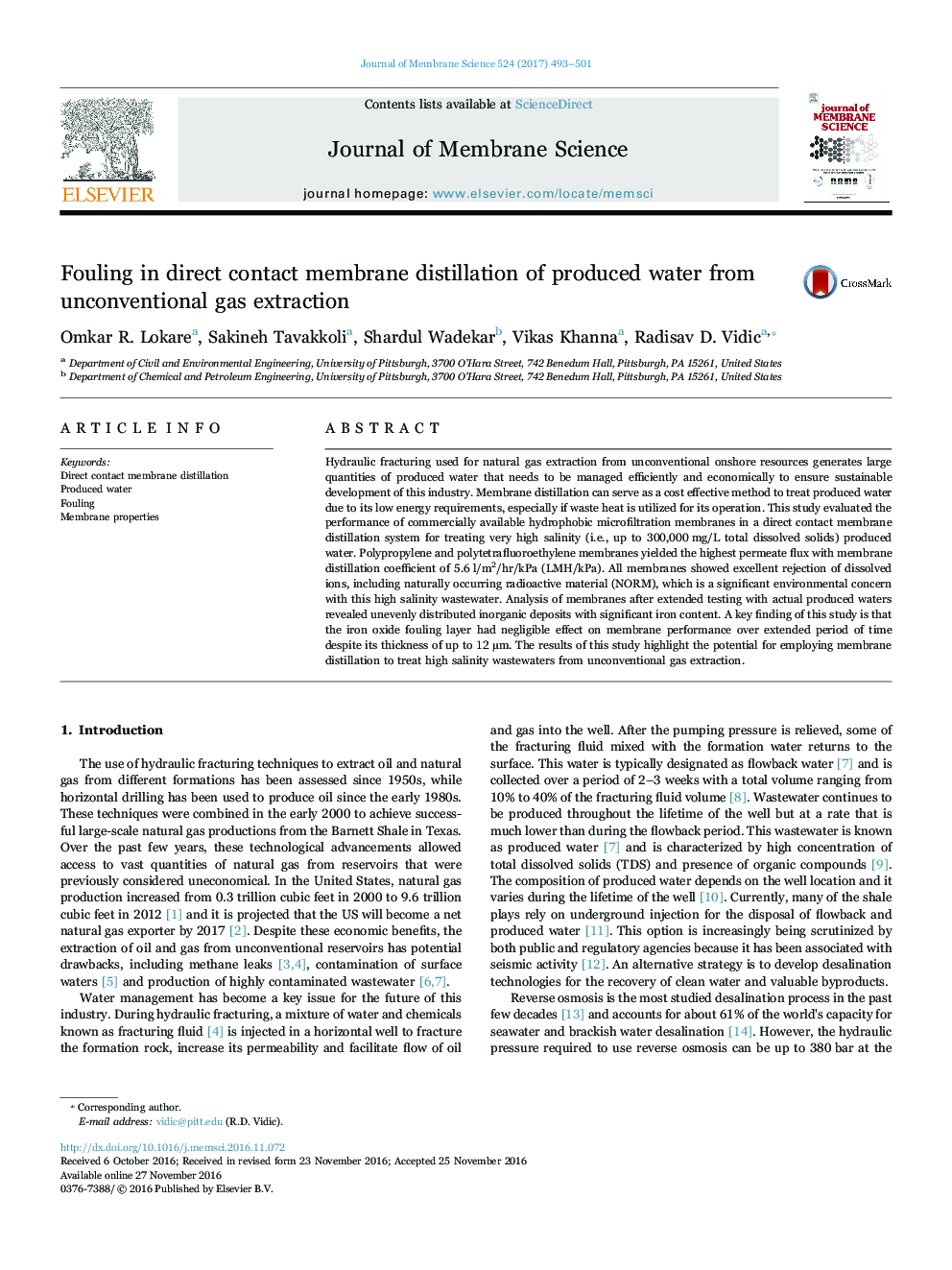| Article ID | Journal | Published Year | Pages | File Type |
|---|---|---|---|---|
| 4989237 | Journal of Membrane Science | 2017 | 9 Pages |
Abstract
Hydraulic fracturing used for natural gas extraction from unconventional onshore resources generates large quantities of produced water that needs to be managed efficiently and economically to ensure sustainable development of this industry. Membrane distillation can serve as a cost effective method to treat produced water due to its low energy requirements, especially if waste heat is utilized for its operation. This study evaluated the performance of commercially available hydrophobic microfiltration membranes in a direct contact membrane distillation system for treating very high salinity (i.e., up to 300,000 mg/L total dissolved solids) produced water. Polypropylene and polytetrafluoroethylene membranes yielded the highest permeate flux with membrane distillation coefficient of 5.6 l/m2/hr/kPa (LMH/kPa). All membranes showed excellent rejection of dissolved ions, including naturally occurring radioactive material (NORM), which is a significant environmental concern with this high salinity wastewater. Analysis of membranes after extended testing with actual produced waters revealed unevenly distributed inorganic deposits with significant iron content. A key finding of this study is that the iron oxide fouling layer had negligible effect on membrane performance over extended period of time despite its thickness of up to 12 µm. The results of this study highlight the potential for employing membrane distillation to treat high salinity wastewaters from unconventional gas extraction.
Related Topics
Physical Sciences and Engineering
Chemical Engineering
Filtration and Separation
Authors
Omkar R. Lokare, Sakineh Tavakkoli, Shardul Wadekar, Vikas Khanna, Radisav D. Vidic,
